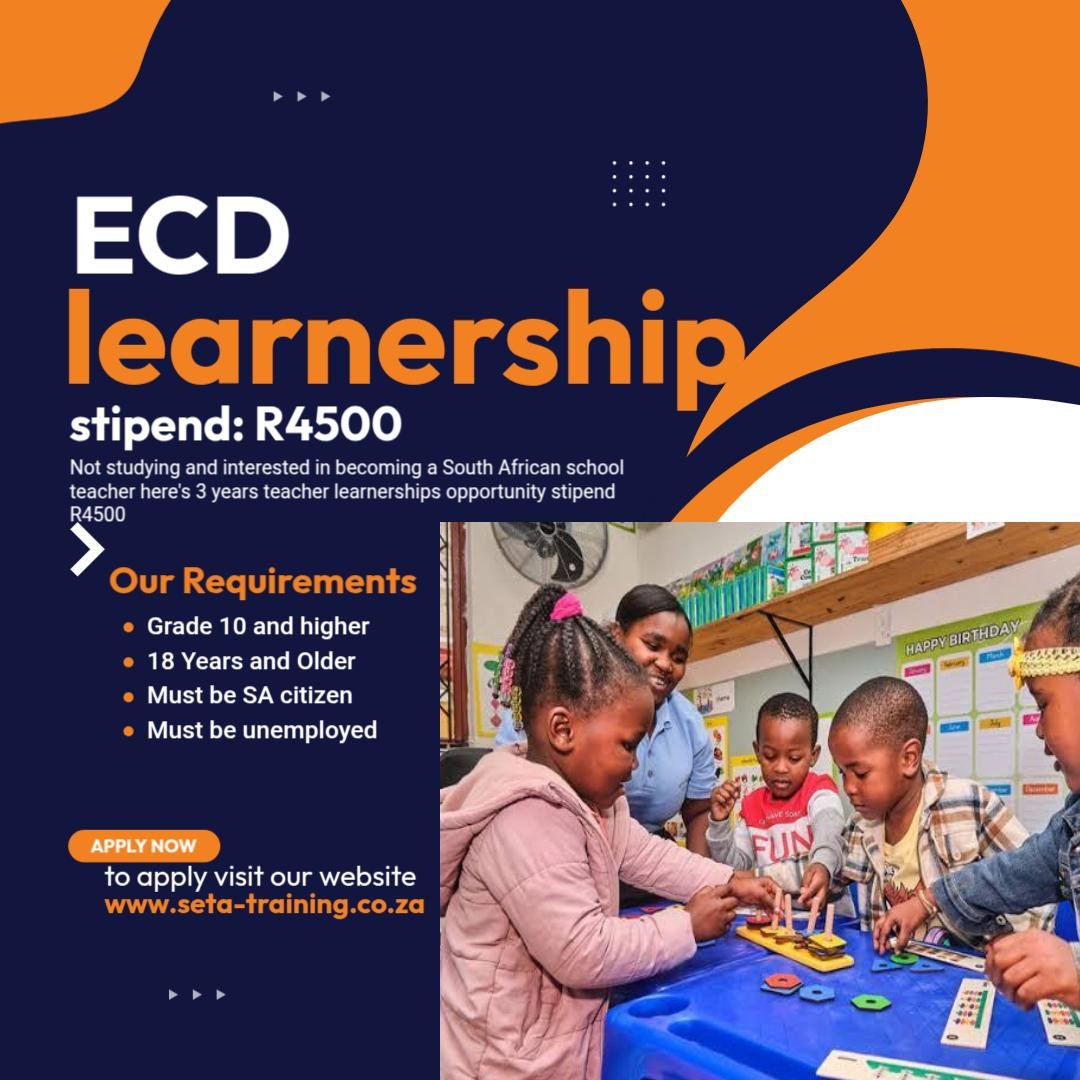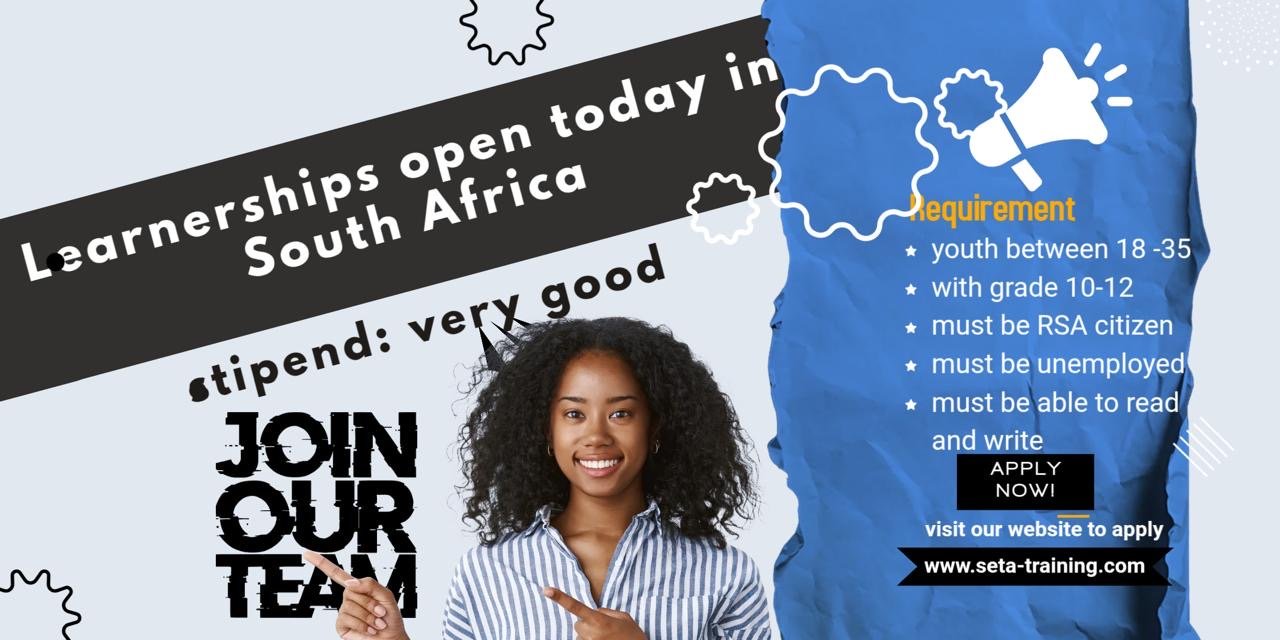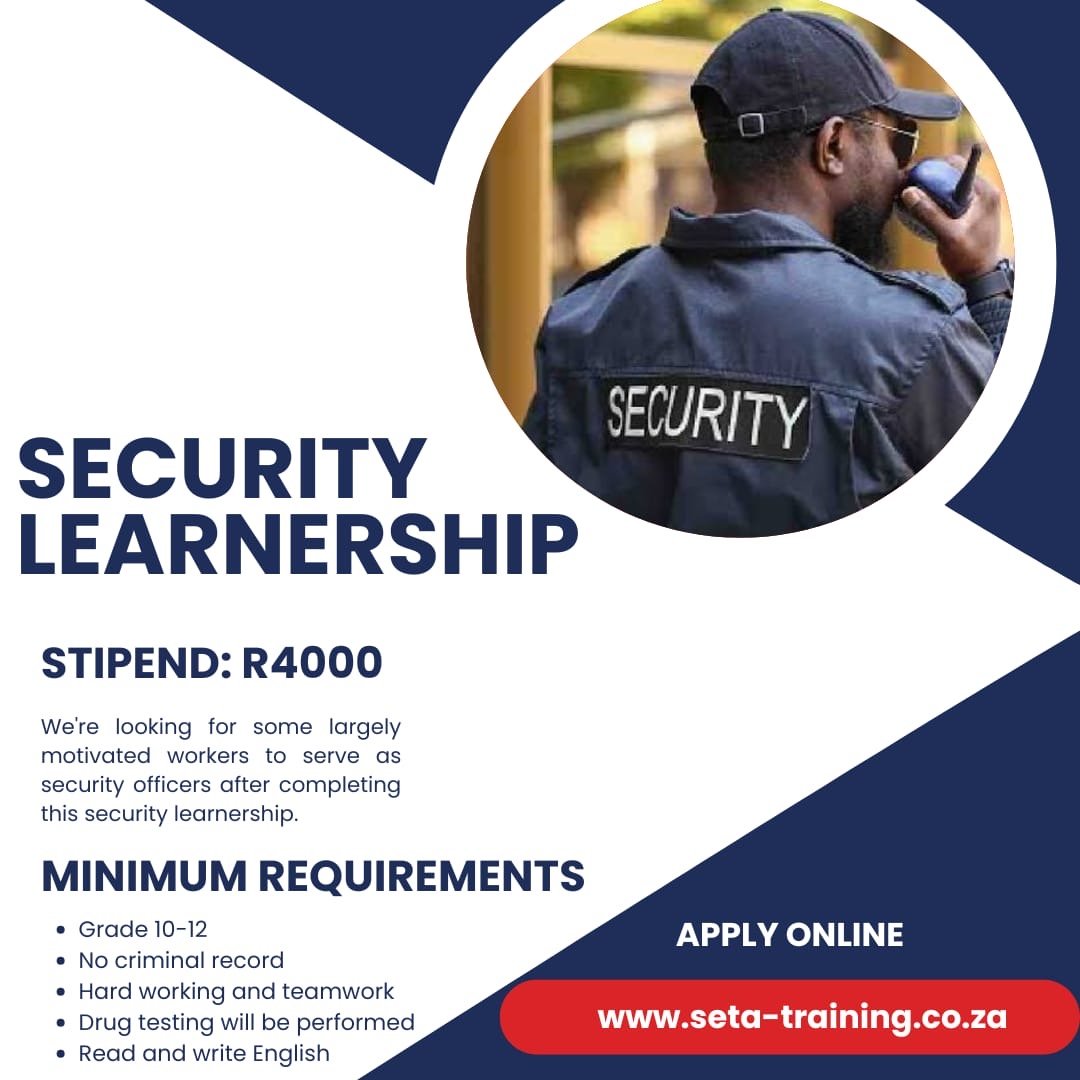Understanding SETA Learnerships
SETA stands for Sector Education and Training Authority. These are sector-specific government-linked bodies in South Africa that coordinate skills development, training, and accreditation under the Skills Development Act. Their aim is to bridge the skills demand–supply gap and make training accessible through learnerships—structured training programmes that combine theoretical learning with workplace experience.
Key features:
- SEF to no application fees—learnerships are free for applicants.
- Most include a monthly stipend (R3 500–R6 500), depending on sector level and provider
- On completion, you gain a SAQA-aligned qualification and meaningful work experience.
- A formal Learnership Agreement must be signed by you, the employer, and the training provider—this sets clear roles, legal rights, and obligations
Who Can Apply? Eligibility Checklist
Eligibility varies across sectors, but typically includes:
- South African citizen (ID required).
- Age—usually between 18 and 35, though some programmes may differ.
- Qualification level—Matric, Grade 10, N6, or relevant certificate depending on programme.
- Unemployed status—most programmes target unemployed youth.
- Additional requirements—some programmes ask for specific subjects or digital literacy, especially in IT or technical fields.
Step‑by‑Step Application Process
Step 1: Identify Your Sector & SETA
- There are 21 SETAs, each tied to a specific industry (e.g., MICT for IT/media, Services SETA for hospitality, MERSETA for engineering).
- Use the SETA national portal or individual SETA sites to explore available learnerships by secto.
- Browse trusted job portals such as Indeed, PNet, Careers24, Job Mail, with alerts for keywords like “SETA learnership”
Step 2: Track Application Windows
- Many programmes open in January–April, with learnerships commencing June–August
- Some have rolling intake, especially roles like media, retail, or IT in September 2025
- Pro tip: sign up for SETA newsletters or alerts and apply early
Step 3: Gather Required Documents
Typically required:
| Document | Notes |
| Certified copy of South African ID | Ensure it’s less than 3 months old |
| Certified copy of highest qualification (Matric/N6) | Recent certification required |
| Proof of residence | Utility bill, lease, or affidavit |
| Updated CV | Outline education, skills, and any experience |
| Motivation/cover letter | Should explain your interest and goals |
| Banking confirmation letter | If stipend deposit is needed |
| Disability documents (if applicable) | For inclusive programmes |
| References (optional) | May improve application |
- • Have these certified at a police station or commissioner of oaths within the past 3 months.
- Organize the documents clearly and label them properly (e.g., “ID_YOURNAME.pdf”).
Step 4: Submit Your Application
- Apply online via SETA portals or provider sites. Ensure file formats are accepted (PDF or DOCX, usually under 5MB).
- If applying via email, use a clear subject line like: “Application: 2025 [Insert SETA] Learnership – Your Name”; attach labeled files.
- Some programmes allow in‑person delivery, so check local labour centres or offices.
- Double-check each application—misspellings or blank fields can cause disqualification.
Step 5: Interview & Selection
- Shortlisted candidates may face interviews, assessments, or aptitude tests.
- Prepare by researching the SETA and training provider, practicing common questions like “Why this programme?”.
- Dress professionally, arrive early, and bring extra document copies.
- Some assessments may include numeracy, literacy, or sector-specific tests.
Step 6: Signing Learnership Agreement & Starting
- If successful, you will sign a Learnership Agreement—a legally binding contract between you, the employer, and the SETA
- You’ll receive offer details—stipend amount, start date, duration (12–24 months), and training structure
- Training typically involves theoretical components, workplace experience, and logbookmaintenance (depending on sector)
During the Learnership: How to Excel
- Be punctual, professional, and proactive—valuable attributes in the workplace.
- Keep a log of assignments and learning progress; build your portfolio.
- Network with peers, mentors, and professionals—opportunities often arise through connections.
- Engage in SMART goal setting for skills development and career planning.
- Be prepared for final assessments or evaluations, and seek support early if struggling.
Standing Out: Pro Tips from the Field
- Apply early—early applicants often get more attention.
- Tailor your CV to the programme—emphasize relevant skills and competencies like computer literacy, communication, or attention to detail.
- Craft a genuine motivation letter—clearly articulate your passion and how the learnership aligns with your goals.
- Get connected—register on platforms like the Services SETA learner portal to help employers spot you and notify you of opportunities.
- Stay alert for rolling or niche programmes—for example, IT/media (MICT SETA) or skills programmes open in September 2025
Summary Checklist (Quick & Handy)
| Step | Action |
| 1 | Identify sector & SETA and open learnerships |
| 2 | Monitor application windows and stay informed |
| 3 | Prepare and certify all required documents |
| 4 | Submit clear applications (online or email) |
| 5 | Prepare and attend interviews/assessments |
| 6 | Sign agreement, start training with professionalism |
Following this guide, you’re well-equipped to navigate the 2025 SETA learnership application process decisively and confidently. If you’d like help with your CV, motivation letter, or finding current openings, I’d be glad to assist!



